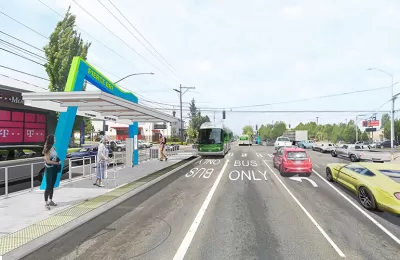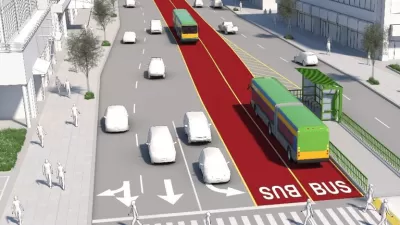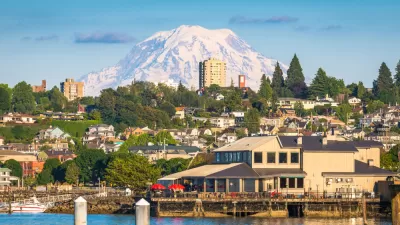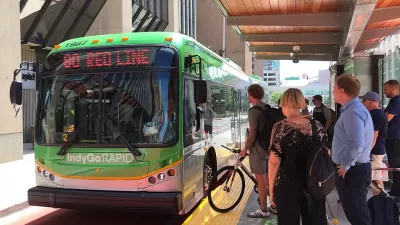A planned bus rapid transit (BRT) line known as “Stream” will have to move forward in some new, as-yet-unplanned form in Tacoma, Washington.

Ryan Packer reports: Pierce Transit told its board of commissioners that it could no longer move forward with plans to create any dedicated space for buses along Pacific Avenue between downtown Tacoma and Spanaway.”
“The line, which was to be run under the branding of “Stream” and would have upgraded Pierce Transit’s most-used route, Route 1, has been in planning for over five years and gone through multiple iterations as the agency tried to find a design that met the approval of both the City of Tacoma and the Washington State Department of Transportation (WSDOT), which would have to sign off on any changes to a significant portion of the corridor that exists as State Route 7,” explains Packer.
Stream BRT was doomed by delays and high costs—the latter driven by the large need for property acquisitions along the route and a common story from around the region.
“The battle over the need for property acquisition to avoid impacts to existing (and future) traffic echoes similar struggles elsewhere in the region, including Sound Transit’s Stride BRT projects, which also face significant budget increases,” writes Packer.
All is not lost for the concept of high quality transit along the corridor—Pierce Transit has to find a way to bring down the cost for a transit project by $100 million, or so, to make the project budget work.
Previous Planetizen coverage of Tacoma and Pierce Transit’s BRT plans:
- Bus Rapid Transit Upgrade Coming to Tacoma-Spanaway Route (July 2018)
- Tacoma Weighs Bus Rapid Transit (March 2019)
- 'Hybrid' Bus Rapid Transit Design Preferred in Tacoma, Washington (April 2019)
FULL STORY: Pierce Transit’s Plan for Pacific Avenue Bus Rapid Transit Project Collapses

Planetizen Federal Action Tracker
A weekly monitor of how Trump’s orders and actions are impacting planners and planning in America.

Maui's Vacation Rental Debate Turns Ugly
Verbal attacks, misinformation campaigns and fistfights plague a high-stakes debate to convert thousands of vacation rentals into long-term housing.

Restaurant Patios Were a Pandemic Win — Why Were They so Hard to Keep?
Social distancing requirements and changes in travel patterns prompted cities to pilot new uses for street and sidewalk space. Then it got complicated.

In California Battle of Housing vs. Environment, Housing Just Won
A new state law significantly limits the power of CEQA, an environmental review law that served as a powerful tool for blocking new development.

Boulder Eliminates Parking Minimums Citywide
Officials estimate the cost of building a single underground parking space at up to $100,000.

Orange County, Florida Adopts Largest US “Sprawl Repair” Code
The ‘Orange Code’ seeks to rectify decades of sprawl-inducing, car-oriented development.
Urban Design for Planners 1: Software Tools
This six-course series explores essential urban design concepts using open source software and equips planners with the tools they need to participate fully in the urban design process.
Planning for Universal Design
Learn the tools for implementing Universal Design in planning regulations.
Heyer Gruel & Associates PA
JM Goldson LLC
Custer County Colorado
City of Camden Redevelopment Agency
City of Astoria
Transportation Research & Education Center (TREC) at Portland State University
Jefferson Parish Government
Camden Redevelopment Agency
City of Claremont





























